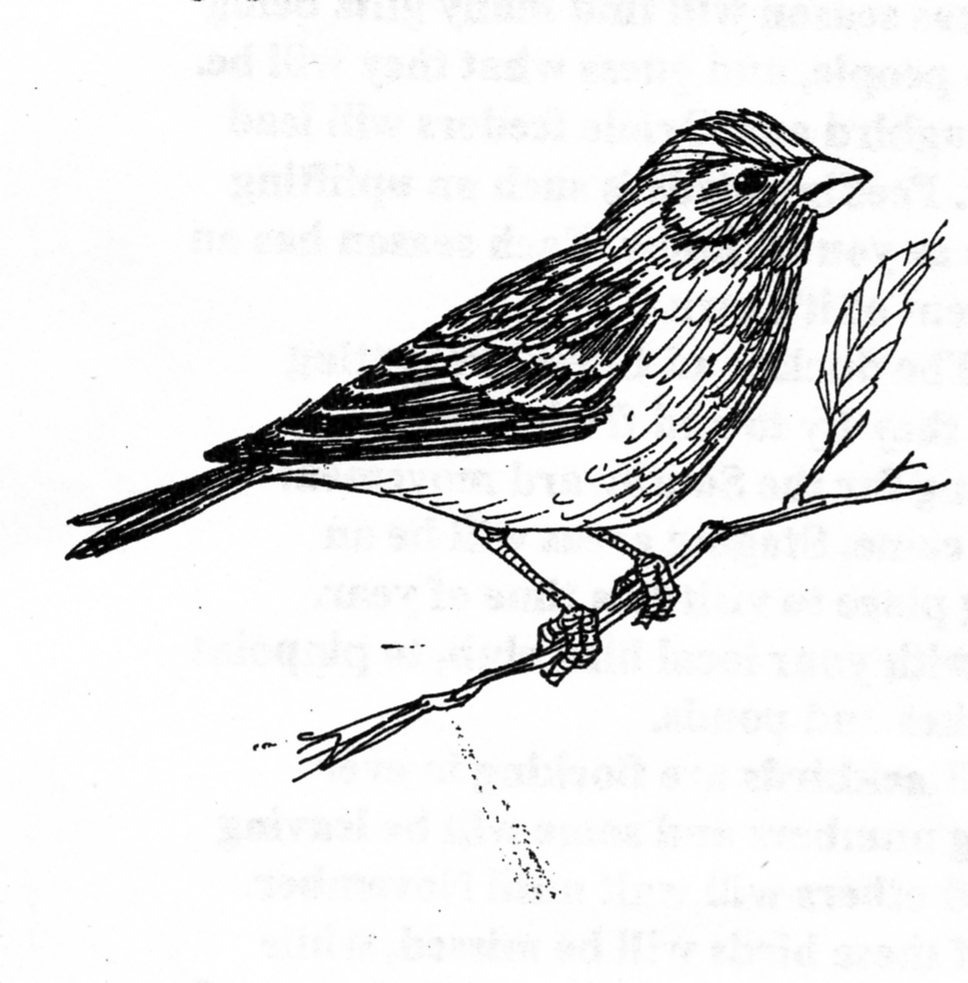Common Birds
Purple Finch

Purple Finch (Bird of the Month) – What a privilege it is to have Purple Finch in our area this winter. These finches differ from our more common nesting bird, the house finch. The purple finch breeds in the evergreen forests of the northern parts of the country and corresponding sections in Canada. It has a chunkier build than the house finch and is slightly larger. The male lacks the brown stripes on its sides and lower breast as on the male house finch, while the female purple finch has a broad white eye stripe, which separates it from the female house finch, and the stripes on her breast are bolder and more pronounced. First year male purple finch will have the same coloration as the female. These males do not get their adult plumage until the second year. By then it will have mated and raised its first young before the “post nuptial” molt gives him his beautiful purple mature feathers, with the feathers on the top of their head looking as if they have been ruffled. Therefore, if you are invaded by these friendly birds, you will notice the brown ones will outnumber those males with purple by about 4 to 1. Purple finch can become very tame around the feeders. Their song and constant chattering is music to your ears.
The nest of the purple finch is built from 5 to 60 feet above the ground of an evergreen in their northern territories. She will place it in the dense foliage, saddled on a single branch. The 4 to 5 heavily spotted eggs she lays will take about 11 days to hatch. At that time both parents will feed the young. It will be another 12 days before these youngsters leave the nest. The adults continue to tend to the needs of these fledglings for several more weeks or until they can fend for themselves. In the eastern part of their nesting territories there is normally just one nesting.
These birds can be very sporadic as to where they spend the winters. For several years we saw very few of them during the winter. Lately, however, they have shown up in good numbers. They are still very erratic. One day you may see them at your feeders, the next day they may have moved on to another feeding location.
In the past year the food supply up north for many of these birds has been reduced from the abnormally dry weather conditions. This lack of natural foods is why we have experienced a large number of many northern birds appearing in our area once again. The sweet song of the male purple finch is enough to make anyone desire these little fellows. We can only hope that this will be the year of the purple finch here in the Midwest and Central Great Plains. So if your fortunate enough to have them visiting your feeders, enjoy them. By mid-spring they will retreat back to the north woods. Only time will tell if we will be visited by them again next winter.
Contributed by Mr. Weir Nelson of Wildlife Habitat, Cedar Rapids, Iowa
